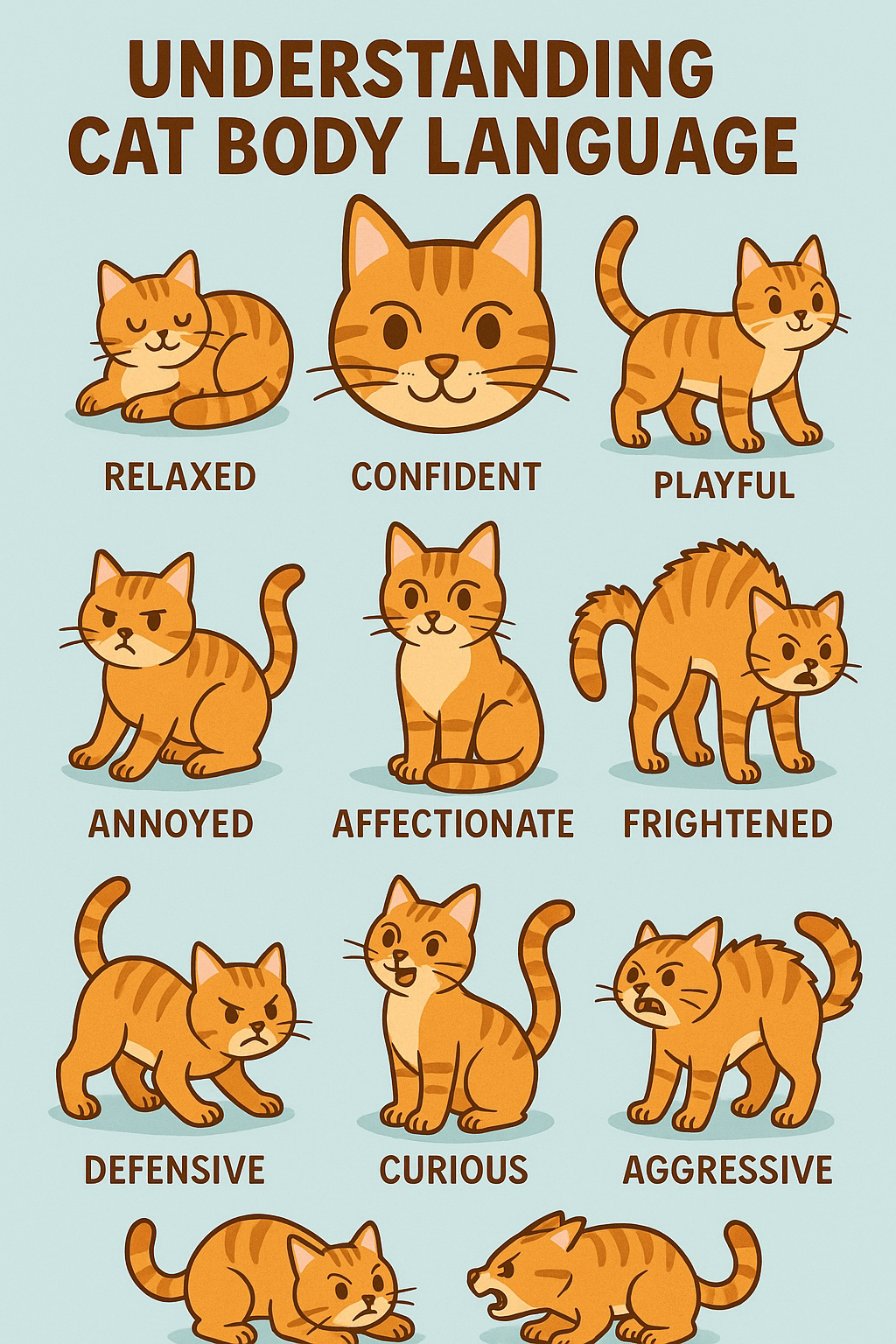Cats may not speak our language, but they’re constantly communicating. From flicking tails to flattened ears, your cat’s body language offers powerful clues about how they’re feeling and what they need. Whether you’re a lifelong cat parent or a new feline friend, learning to read these signals helps deepen your bond and prevent misunderstandings.
Let’s break down the basics of cat body language—so you can finally understand what your cat is really saying.
👁️ Eyes, Ears, and Whiskers
Cats have expressive faces—if you know where to look.
Eyes
• Slow blinking = Trust and affection
• Dilated pupils = Excitement, fear, or aggression
• Narrowed eyes = Relaxation or irritation
Ears
• Forward = Alert or curious
• Sideways or flattened = Anxious or annoyed
• Back and flat = Scared or defensive
Whiskers
• Forward and tense = Focused or hunting
• Relaxed = Calm
• Pinned back = Stressed or scared
🐈⬛ The Tail Tells All
Tail position is one of the clearest ways cats show emotion:
• High and upright = Confident, friendly
• Puffed up = Startled or scared
• Twitching or lashing = Annoyed or overstimulated
• Low and tucked = Nervous or submissive
• Gently swishing = Playful or curious
Pay attention to speed and motion—slow tail movements often show interest, while fast, harsh flicks mean “back off.”
🧍♂️ Full-Body Posture
A cat’s stance tells you how they feel in the moment:
• Relaxed, lying on their side or back = Comfortable and trusting
• Arched back with fur standing up = Frightened and defensive
• Crouching low with ears back = Scared or about to flee
• Standing tall with tail up = Happy, confident, and ready to interact
If your cat rolls onto their back, it might be an invitation to play—or a trap! Pay attention to the rest of their body and tail.
😺 Vocalizations and Body Language Together
Don’t rely on body language alone—cats often pair their posture with sounds:
• Purring with relaxed posture = Content
• Growling or hissing with tense posture = Warning signs
• Chirping or trilling = Greeting or excitement
• Meowing with upright tail and soft eyes = Wants attention
Together, vocal cues and body signals form a complete emotional picture.
🧠 Why It Matters
Understanding your cat’s body language isn’t just about avoiding scratches—it’s about trust. When your cat sees that you’re “listening,” they feel safer and more connected. You'll also be able to spot signs of stress or illness early, allowing you to act before things escalate.
🐾 Conclusion
Cats are complex, emotional creatures who speak through every flick of the tail and twitch of the ear. By tuning in to their body language, you’ll build a stronger relationship and help your feline friend feel understood, safe, and loved.
Your cat may not speak your language—but now, you speak theirs.

